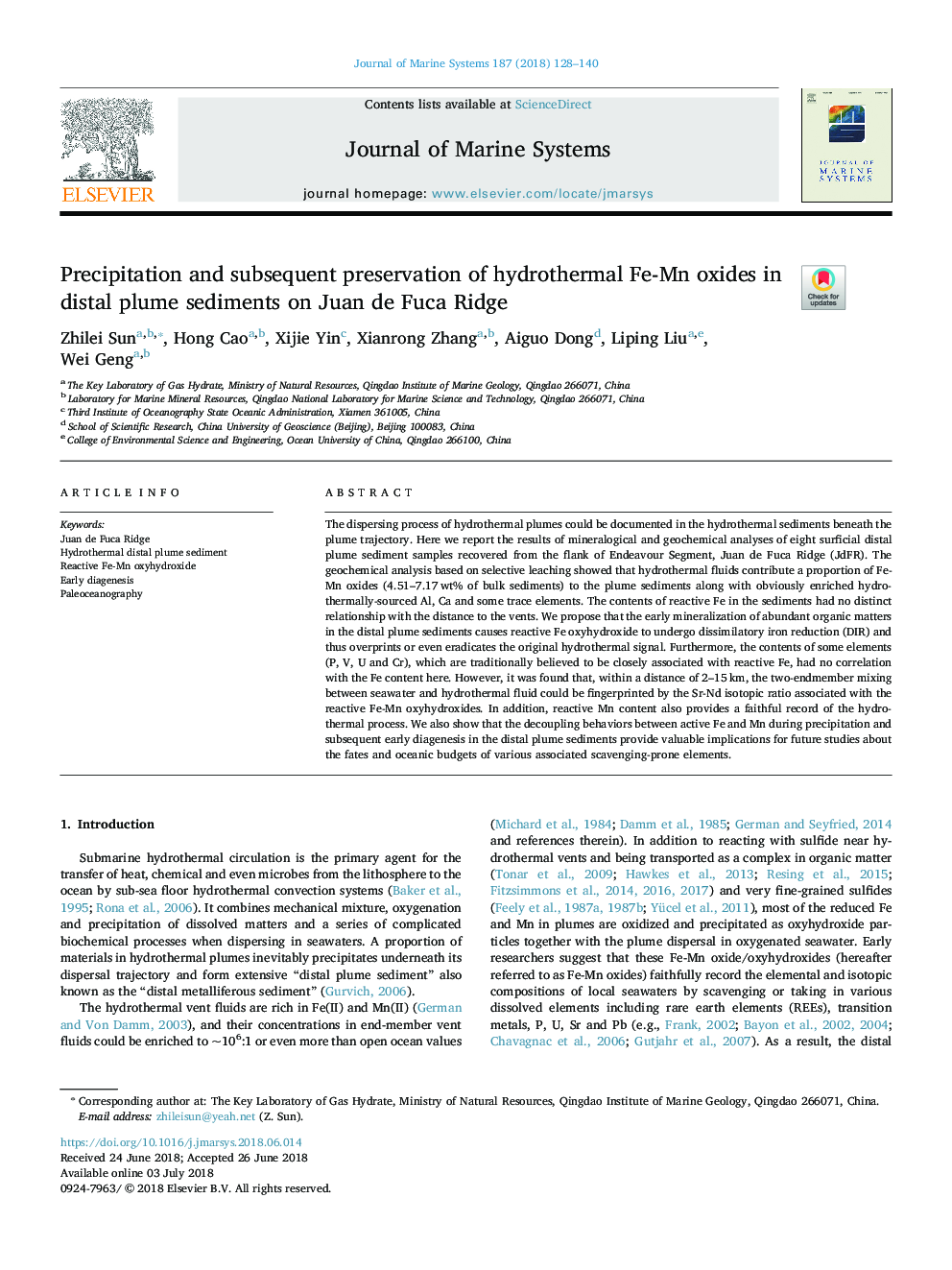| Article ID | Journal | Published Year | Pages | File Type |
|---|---|---|---|---|
| 8885896 | Journal of Marine Systems | 2018 | 13 Pages |
Abstract
The dispersing process of hydrothermal plumes could be documented in the hydrothermal sediments beneath the plume trajectory. Here we report the results of mineralogical and geochemical analyses of eight surficial distal plume sediment samples recovered from the flank of Endeavour Segment, Juan de Fuca Ridge (JdFR). The geochemical analysis based on selective leaching showed that hydrothermal fluids contribute a proportion of Fe-Mn oxides (4.51-7.17â¯wt% of bulk sediments) to the plume sediments along with obviously enriched hydrothermally-sourced Al, Ca and some trace elements. The contents of reactive Fe in the sediments had no distinct relationship with the distance to the vents. We propose that the early mineralization of abundant organic matters in the distal plume sediments causes reactive Fe oxyhydroxide to undergo dissimilatory iron reduction (DIR) and thus overprints or even eradicates the original hydrothermal signal. Furthermore, the contents of some elements (P, V, U and Cr), which are traditionally believed to be closely associated with reactive Fe, had no correlation with the Fe content here. However, it was found that, within a distance of 2-15â¯km, the two-endmember mixing between seawater and hydrothermal fluid could be fingerprinted by the Sr-Nd isotopic ratio associated with the reactive Fe-Mn oxyhydroxides. In addition, reactive Mn content also provides a faithful record of the hydrothermal process. We also show that the decoupling behaviors between active Fe and Mn during precipitation and subsequent early diagenesis in the distal plume sediments provide valuable implications for future studies about the fates and oceanic budgets of various associated scavenging-prone elements.
Related Topics
Physical Sciences and Engineering
Earth and Planetary Sciences
Oceanography
Authors
Zhilei Sun, Hong Cao, Xijie Yin, Xianrong Zhang, Aiguo Dong, Liping Liu, Wei Geng,
